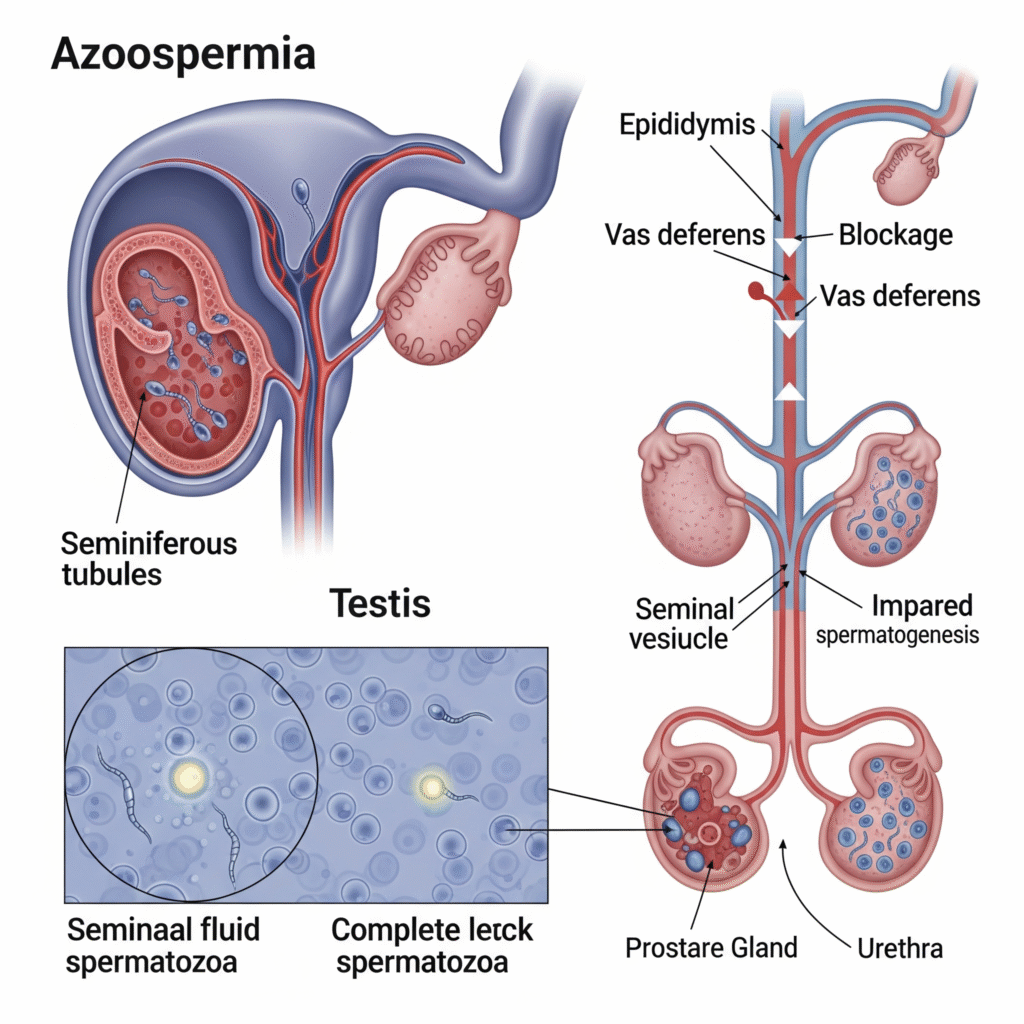Azoospermia
Introduction
Azoospermia is a medical condition in men where there is no average sperm in semen. This is a major cause of male infertility and affects about 1% of the male population and about 10–15% infertile men. Azoospermia may be caused by problems in sperm production or problems in reproductive tract blockage.

Types of azoospermia
Inhibitory azoospermia
In this type, sperm is commonly produced in the testicles, but is blocked by release due to obstruction in the reproductive tract. The reasons include vas defenders, infection, trauma, or congenital absence of surgical complications.
Non-indigenous azoospermia
This type is caused by problems in sperm production within the testicle. This can occur as a result of genetic disorders, hormonal imbalances, exposure to toxins, or testicular failure.
Pre-tolerable azospermia
It is caused by hormonal or endocrine dysfunction that spoils the stimulation of the testes to produce sperm. This includes conditions such as hypogonadotropic hypogonadism or pituitary gland disorder.
Causes of azoospermia
- Genetic disorder like Clynfelter syndrome
- Hormonal imbalance affecting sperm production
- Vas Deferens or Ejaculatory ducts blockage
- Last infections such as gogal orchitis
- Varicosel affecting testicular temperature
- Undivided testicles (cryptocidism)
- Use of anabolic steroids or some drugs
- Radiation or chemotherapy treatment
- Congenital absence of habitual
- Pituitary gland dysfunction
- Interaction with environmental toxins or heat
Clinical features of azoospermia:
Infertility
The most common feature, because the affected men are unable to give a father to a child despite regularly unprotected intercourse.
Low semen quantity
In some cases, especially obstructive ezospermia, semen may be less visible in unusually volumes.
Testicular abnormalities
The testicles may feel small, soft or firm depending on the underlying cause, such as testicular failure or obstruction.
Hormonal symptoms
Symptoms such as low libido, erectile dysfunction, fatigue, or low face/body hair may appear due to low testosterone levels.
Allied genetic
Men may contain signs of genetic disorders (eg, clinphlter syndrome), such as long height, short testes, or gynecomastia.
Symptoms associated with Azoospermia
- Inability to conceive after continuous unsafe.
- Pain or swelling in the testicular or waist area.
- Hormonal imbalance reduced the hair or body hair.
- Interest in erectile dysfunction or sexual activities decreased.
- Smaller than average testicles during physical examination.
- Breast growth or tenderness in men (gynecomastia).
Fatigue and low energy levels are linked to low testosterone.
Investigations in Azoospermia
- Repeated tests confirm the absence of sperm in ejaculation samples.
Blood tests measure the levels of FSH, LH, testosterone and prolactin to assess hormonal functions.
The scrotum helps to detect varicocele, testicular size, or structural abnormalities.
Ejaculatory ducts or seminal vesicles are used to evaluate obstacles or abnormalities.
Chromosomal disorders (eg, clinphlter syndrome) or Y-chromosome microdelets.
It determines whether sperm production is occurring under the testes in non-instigator cases.
Used in cases where pituitary tumors or other structural issues are doubted.
